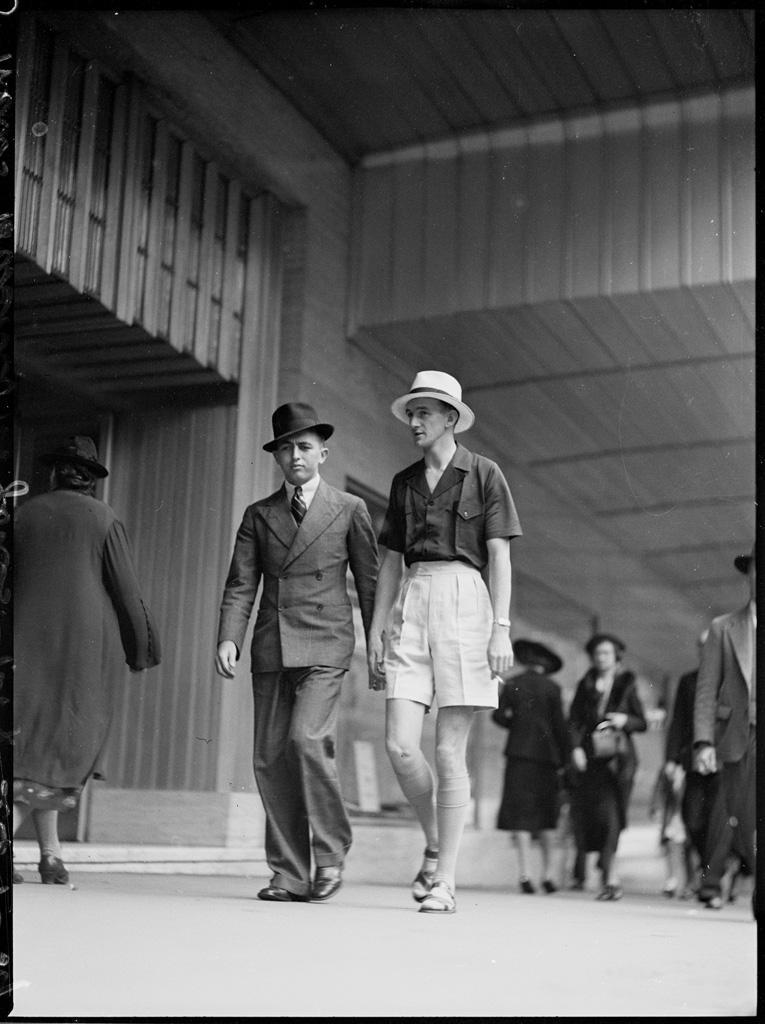In November 1922, Sydney’s Daily Telegraph newspaper published a letter written by Emily Bennett, Honorary Secretary for the Women’s Reform League. Why, she asked, were men so hesitant to adopt ‘rational attire’ that was better suited to Australia’s climate and the conditions in which they lived and worked? Bennett mused: ‘Is it because they are self-conscious, and fear being “one of the conspicuous few” to drop formalities and convention for commonsense comfort?’
A month earlier, Fred Wright had written to the paper’s editor explaining the challenges that young men faced when they were expected to ‘look respectable’ by their employers. He felt they could not go without collars and coats, as dress reformers advocated in hot weather, when this was generally considered sloppy and unbusinesslike. In other words, Wright explained, ‘A young man cannot come to work dressed as if he were going to a picnic’.
Ideas of men’s dress reform were not new in the 1920s. Nor were they confined to Australia. Various dress reform movements had existed from the mid to late nineteenth century: those in Britain, for example, where supporters emphasised health and hygiene concerns over constrictive, tight collars and conservative, heavy suits. The aesthetics of men’s dress also came under scrutiny – men’s clothing was considered by reformers to be drab, austere, colourless.
By the late 1920s, reformers both in Britain (where the Men’s Dress Reform Party [MDRP] was established in 1929) and Australia advocated for different cuts to men’s clothing or swapping certain items with others, cloth weights better suited to the season and introducing more colour. Australian newspapers reported on dress reform with interest, including Secretary of the MDRP, Dr A. C. Jordan’s scathing description of men’s clothing as ‘heavy, thick, ugly, gloomy, uncomfortable and inartistic’.
A range of alternatives were suggested: jackets could be replaced with knitted jumpers; shirts for blouses; stiff collars and ties for looser versions that allowed the neck to move; trousers for shorts; and shoes for sandals. Hats could be dispensed with altogether – unless they served the practical function of protecting their wearer from the sun or rain.

A wonderful example of the possibilities for this new mode of dressing was captured by photographer Ray Olson, in his shoot for new men’s fashion at David Jones in January 1939. Two men walk side-by-side in outfits that in many ways contrast each other: one in a snappy double-breasted suit, a shirt with tightly knotted tie, hat on a jaunty angle and leather shoes; the other in an open-necked short-sleeved shirt, tailored shorts, long socks and sandals.
It is precisely the look that dress reformers encouraged men to embrace. But does this man look like he’s heading to the office, or as Fred Wright worried, to a picnic?
References
Barbara Burman, ‘Better and Brighter Clothes: The Men’s Dress Reform Party, 1929-1940’, Journal of Design History 8:4 (1995): 275-290.
‘Dress Reform’, Glen Innes Examiner, 26 October 1929, 7.
Emily Bennett, ‘Dress Reform’, Daily Telegraph (Sydney) 27 November 1922, 4.
Fred Wright, ‘Dress Reform’, Daily Telegraph (Sydney) 27 October 1922, 4.
Joanna Bourke, ‘The Great Male Renunciation: Men’s Dress Reform in Inter-War Britain’, Journal of Design History 9:1 (1996): 23-33.
Sharon Peoples, ‘Dress, moral reform and masculinity in Australia’, Grainger Studies: An Interdisciplinary Journal 1 (2011), 115–135.
